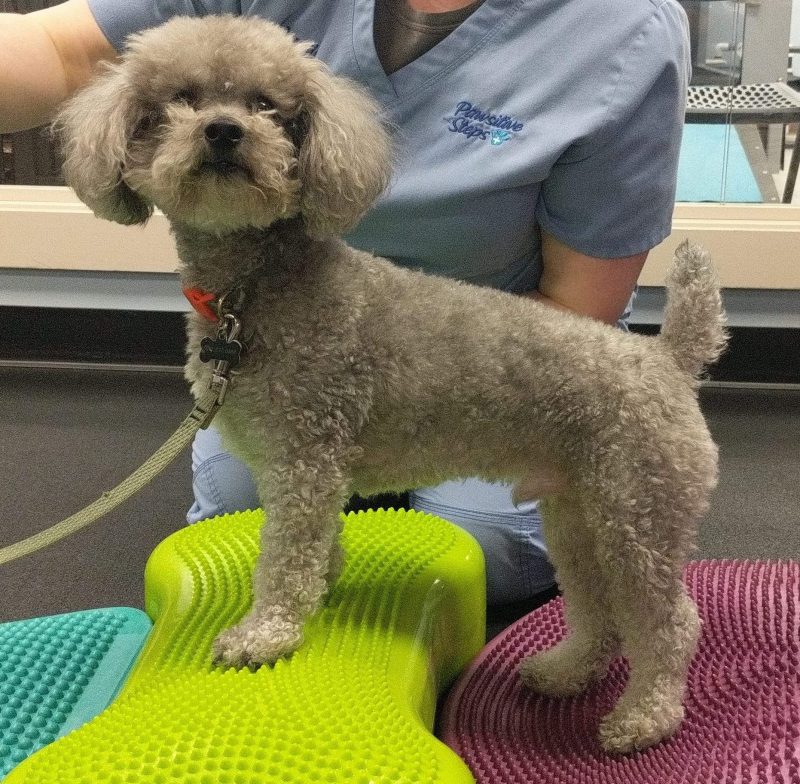No Pain, No Gain!
Janelle Allen, LVT
Consequences of Overworking Your Dog
No pain, no gain! This is a common phrase that we use to motivate ourselves during a workout. The idea is that we won’t make improvements in the gym if we don’t push ourselves to the limit. We want to feel that soreness in our muscles. This concept is opposite of ideal for our dogs. In this blog, we will explore the signs of fatigue in our dogs and how to avoid overworking your pet.
Why We Don’t Want to Overwork Our Pets
As humans, we want to feel some muscle soreness after a workout and we feel a sense of accomplishment when we do. It’s a “hurts so good” type of feeling. Our dogs do not understand this concept. When we overwork our dogs to the point of muscle soreness, they may avoid physical activity altogether. If the goal is to rehabilitate an animal after surgery for example, we need them to participate in specific exercises. If they are sore, they will avoid the exercises. Along with muscle soreness, an overworked animal may also have sore joints. When joints are overworked or pushed to their limits, they can become sore. Many times, joint pain is more severe than muscle pain.
Another consequence of overworking our pets is worsening of their condition. If there is already lameness present, overworking the muscles and joints may result in a more significant lameness. There is even a possibility of further injury or injury of another area due to compensation patterns. If the pet has a neurologic condition, their nerves will fatigue before their muscles do. When this happens, exercise form fails and their gait worsens. Usually, they do not get sore which is good, but it may take several hours for them to recover.
Recognizing Signs of Fatigue

While our pets cannot talk using verbal language, they have other indicators than can cue us into their level of fatigue. One sign that we see frequently is avoidance. Typically, avoidance is when your dog does not perform a particular behavior that they know after asking, such as a sit. Another sign is offering a different behavior instead. For example, you ask your dog to lay down, but instead he offers you a paw shake. Another sign of fatigue is leaving work, in which your dog will walk away during an exercise session. Sometimes all they need is a drink of water, but other times, they are looking for any distraction around in order to stop working. Paying attention to your dog’s form when performing exercises can be a sign of fatigue as well. Your dog may start out with good form on a particular exercise and then suddenly the form is not so good. When form becomes sloppy, this may be due to fatigue. This is counterproductive for our patients because the exercises are no longer accomplishing their specific goal.
Conclusion
“No pain, no gain” is a common mantra heard in the gym. But when we are working with our pets, we want to make sure that we do not overwork them. Overworking can lead to muscle and joint soreness, worsening injury, or new injury. Be sure to work with your rehabilitation veterinarian and rehabilitation veterinary technicians to make sure your pet’s workout regimen is appropriate for your animal.
